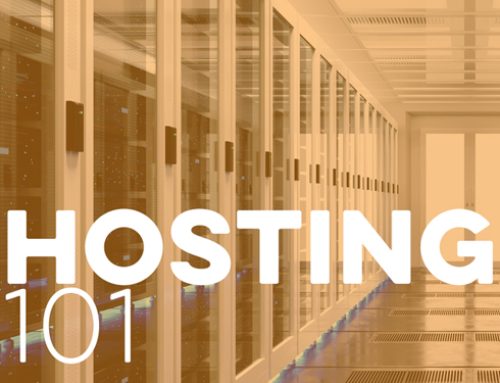Payment Gateways for eCommerce Websites 101
*** This topic is targeted towards small to medium sized businesses starting an Ecommerce website or existing Ecommerce website owners already using a payment gateway. ***
What is a payment gateway?
Payment gateways are a necessity for brick and mortar businesses and ecommerce sites processing credit card and other payment methods. This article will focus on Ecommerce applications but the information also applies to brick and mortar and hybrid operations. More and more businesses are switching to a hybrid model selling online and in-person in response to the pandemic.
A gateway is in essence a clearing house, or a virtual cash register, for electronic transactions, whether you swipe a credit card in person or accept it keyed in online or over the phone. Common popular gateways include companies like PayPal, Square, Authorize.net, Apple Pay, Stripe, etc. These service providers guarantee the secure transmission of personal financial information by confirming with banking institutions to approve transactions, and many other behind the scenes functions to improve customer and business owner experience.
The primary attributes of a good gateway, in no particular order, are:
Security/Encryption, Reliability, Affordability, and Performance / Ease of Use.
What are the different fundamental types of payment gateways?
The most basic and easy to implement is a redirect payment gateway, the most popular being PayPal. This is a good solution to start with if you are small startup, but not a good solution if you are established or plan to grow quickly. When a customer checks out on your website they are taken to a separate secure server to process the transaction. The benefit of this option is that it is cheap and easy to setup/maintain by outsourcing security concerns to the gateway company. The drawback is it can effect your customer user experience by being taken away from your site, and you will pay higher per transaction fees. Note that redirect PayPal gateway does offer guest checkout with credit cards with no PayPal account needed, however, they obscure that option so customers without PayPal accounts might cancel their order at point of sale.
Checkout on site is the preferred option for most businesses that are larger than a hobby Ecommerce site and will lead to better conversions and sales. Large companies will have the resources to process transactions on their own systems but for the purpose of this article, targeting small and medium sized businesses, the transaction will appear to be on site but actually behind the scenes is processed off-site on your gateway’s servers. When people enter their credit card information on your website it is encrypted and sent to the gateway company so no customer credit card numbers are actually stored on site. Many gateways will offer to save credit card information for your customers as an addon for additional streamlined checkouts for your regulars. This option does require more upfront costs and regular maintenance to remain in compliance, but the benefits of user experience and lower fees makes it worth the additional cost for most businesses.
How do I pick the right gateway for my business?
This is the hard part that does require some effort by business owners to identify the right solution(s) for your specific needs. Putting the time into researching and selecting the right gateway, or gateways, can pay off by saving potentially thousands in fees every year. People you will need to consult in this decision will typically include your bank rep, your accountant, and your web manager or consultant.
Here are a few of the most important considerations when doing your research:
- Is your business exclusively online or a hybrid brick and mortar / Ecommerce operation?
- How much revenue does your business generate if already established or what do you anticipate the first year if a new startup?
- Who is your customer base and what methods of payment do they prefer to use?
- Do you plan to accept international payments?
There are more considerations but these will be helpful when shopping for a gateway that matches your needs. The most typical pricing model is 2.9% and $0.30 per transaction, but there are many different models some including monthly fees for reduced per transaction fees. It is important to pick a gateway company with a good reputation and would suggest calling to interview their reps before making a decision. Some banks have partnerships with gateways that might get you a better deal. The main point is to shop around and compare the fees with your projected revenue and growth.
It is also a good idea to use more than one gateway to expand payment options to your customers at checkout. Do you want to accept checks online, Apple Pay, bitcoin, etc, or just the major credit cards? Knowing your customers’ preferred methods of payments is critical in making sure no potential sale is lost at time of payment.
If you already have a functioning Ecommerce website and have been using a gateway, you can still research for better deals as well as more/different options for payments.
So you picked a gateway, or gateways, what does implementation involve?
For the redirect gateway it is very simple and can be setup in less than 30 minutes by any web developer or tech savvy business owner. For on site payment you will likely need a web manager or consultant that has gateway experience.
For on site checkout these are the biggest things you will need to setup your gateway:
- A well-built and regularly maintained website with strong security software security provisions.
- SSL certificate, which are free these days, so if you are still paying $100/year it is time to cancel that certificate.
- Good secure reputable hosting, ideally a dedicated server or VPS. You do not want slow page loads on your business website.
- Account setup with your gateway provider(s) which can take a couple business days.
- Gateway plugin software to integrate with your website. Expect to spend about $80/year to maintain this software.
- PCI Compliance, a legal requirement to ensure financial information and website are secure from hackers or malware.
This sounds a little overwhelming, and things are always changing as technology and payment methods evolve, but worth it for most online stores.
Summary
With all the new methods of electronic payments hitting the market it is important to make sure you offer customers the options they want while also protecting them, and your reputation, from possible ecommerce fraud. Ecommerce competition is cutthroat – you simply cannot afford to not have the right gateway stack for your business. Bottom line is do your research, take the time to shop around, and always consult a professional.
Please feel free to reach out to Sarit+State Creative Studio with any questions you may have about this article.






